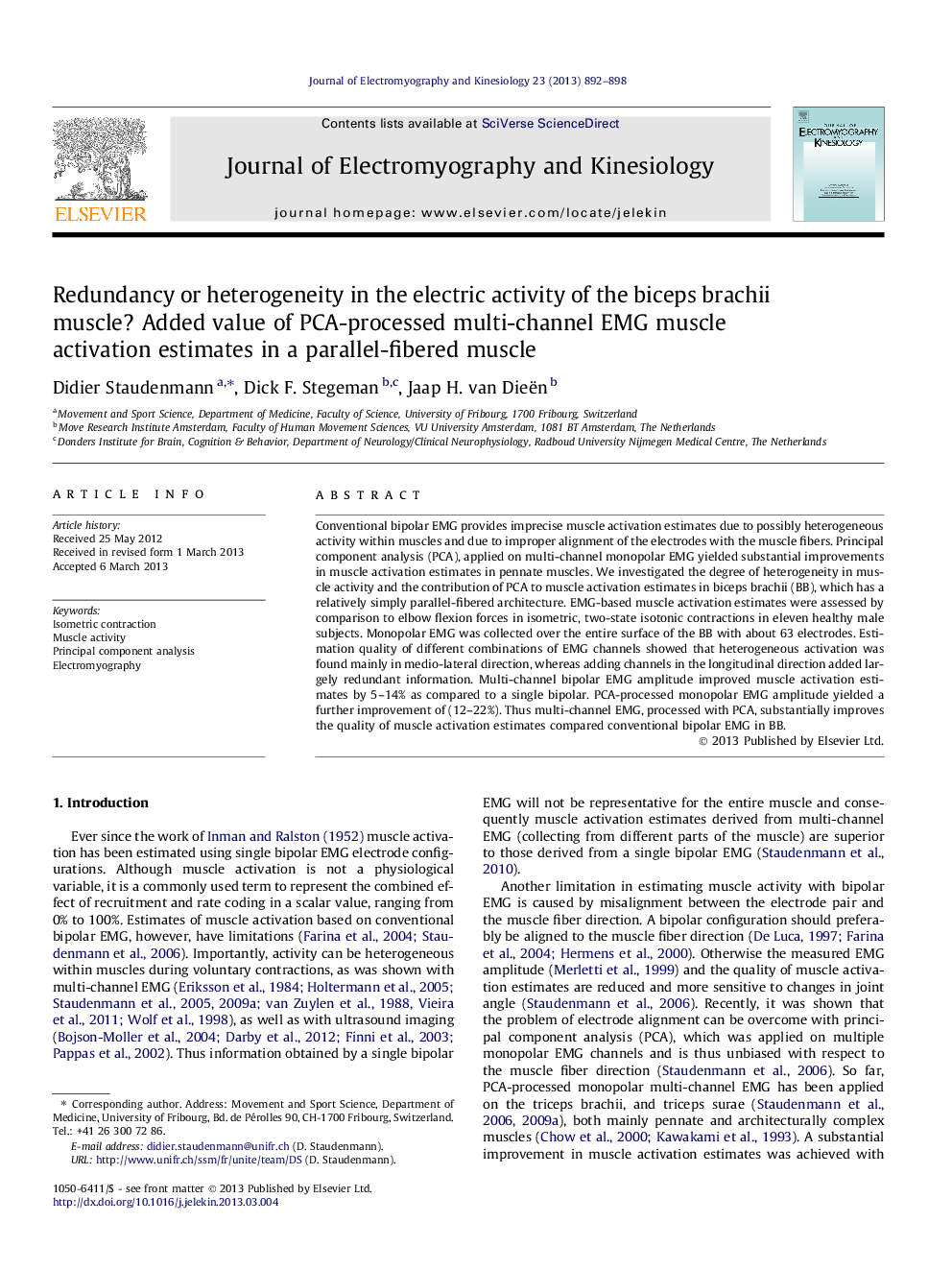| Article ID | Journal | Published Year | Pages | File Type |
|---|---|---|---|---|
| 4064533 | Journal of Electromyography and Kinesiology | 2013 | 7 Pages |
Conventional bipolar EMG provides imprecise muscle activation estimates due to possibly heterogeneous activity within muscles and due to improper alignment of the electrodes with the muscle fibers. Principal component analysis (PCA), applied on multi-channel monopolar EMG yielded substantial improvements in muscle activation estimates in pennate muscles. We investigated the degree of heterogeneity in muscle activity and the contribution of PCA to muscle activation estimates in biceps brachii (BB), which has a relatively simply parallel-fibered architecture. EMG-based muscle activation estimates were assessed by comparison to elbow flexion forces in isometric, two-state isotonic contractions in eleven healthy male subjects. Monopolar EMG was collected over the entire surface of the BB with about 63 electrodes. Estimation quality of different combinations of EMG channels showed that heterogeneous activation was found mainly in medio-lateral direction, whereas adding channels in the longitudinal direction added largely redundant information. Multi-channel bipolar EMG amplitude improved muscle activation estimates by 5–14% as compared to a single bipolar. PCA-processed monopolar EMG amplitude yielded a further improvement of (12–22%). Thus multi-channel EMG, processed with PCA, substantially improves the quality of muscle activation estimates compared conventional bipolar EMG in BB.
